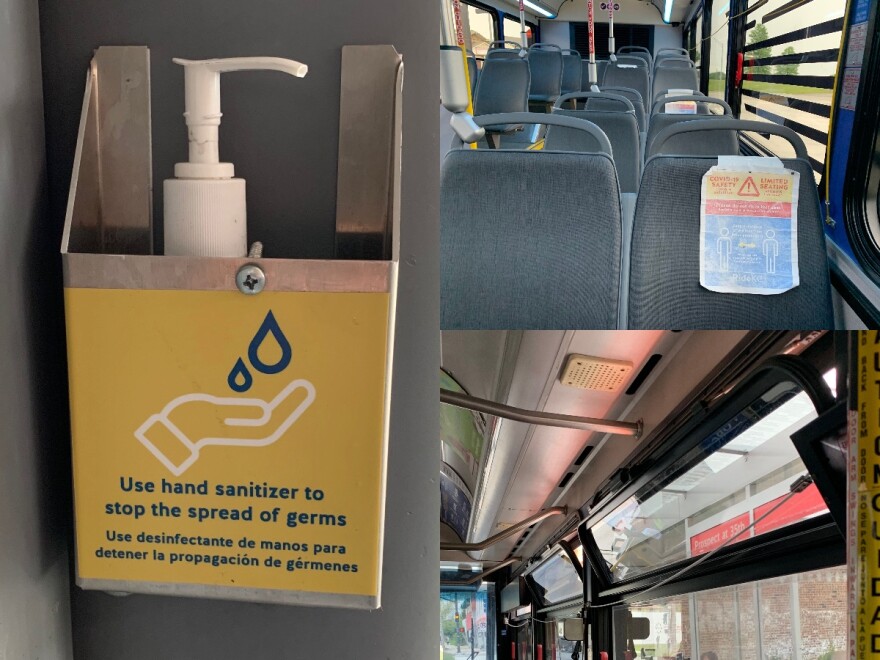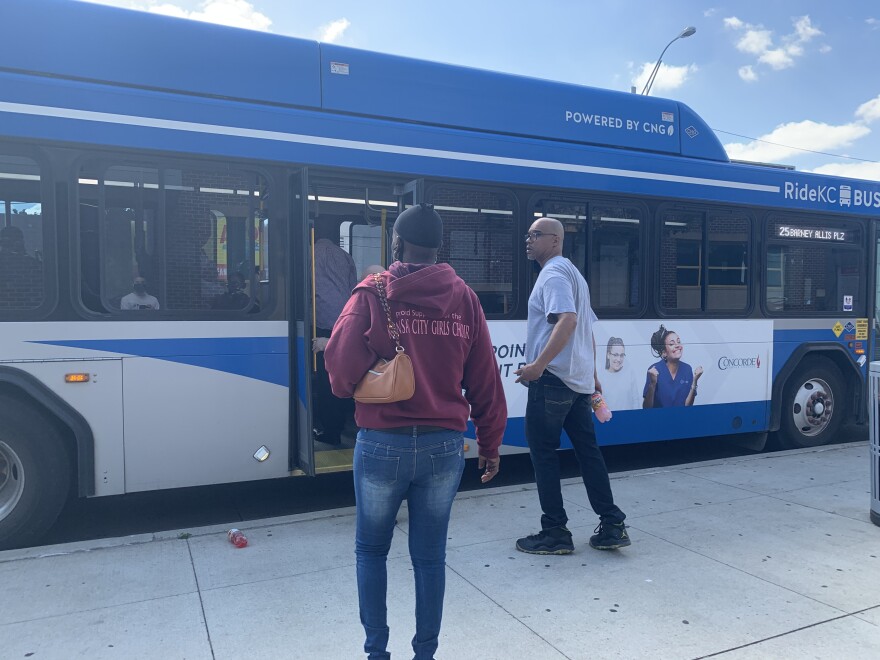Fred Ersery has been a bus driver in Kansas City, Missouri, for 30 years and has driven in almost every situation imaginable.
He’s taken rowdy fans around through the Chiefs’ and Royals’ championship runs. He shuttled the Fab 5 across the city for an episode of Netflix’s "Queer Eye," when the hit show was being filmed here. Still, Ersery says, he’s never experienced anything like driving during the COVID-19 pandemic.
“It's been hectic, I mean...just like everywhere else in society there's good and bad with all of this,” he said.
As more and more Kansas Citians return and the metro economy gradually reopens, drivers like Ersery are a new class of front-line workers trying to prevent the disease’s spread. Ersery says that's not always an easy task.
“Even with less riders now, I have my worries,” Ersery said. “People coughing and not covering up, people not distancing themselves, things like that.”
KCATA makes changes
Get on a public bus in the Kansas City metro nowadays and you’ll be greeted by a variety of changes.
To address concerns about the potential spread of COVID-19, the Kansas City Area Transportation Authority has taken steps to try to ensure buses remain clean and safe.
Now, passengers load from the back of the bus to avoid contact with drivers. (Since KCATA went fare-free this year, there’s no exchange of money between drivers and riders.) Seats are also marked off with signs or zip ties, reducing bus capacity in half. Windows are cracked open to circulate air.

Noah Taborda
Robbie Makinen, President and CEO of the KCATA, says changes go beyond what riders can see.
“Our staff comes on the campus now and we have a health check and get their temperature checked. We have staff cleaning our vehicles from top to bottom all the time,” he said.
They’ve also cut the number of trips buses take, so that now only routes that connect residents to essential services, like hospitals, are running. While ridership has dropped significantly, the KCATA says it is still serving 21,000 riders each day during the pandemic.
Makinen is proud of the quick response by the KCATA, but he says the real praise should go to drivers, like Ersery.
“You might not think it, but these people are front line workers. They’re making essential connections for other front line workers too,” Makinen said.
For his part, Ersery says his job description hasn’t changed much, but his mindset has.
“I’ve got my mask on. When there's a wheelchair, I’ll put my gloves on, and I'll wipe down anything I haven't wiped before. Things to make sure I go home safe and clean,” he said.
He knows many transit employees across the country aren’t going home healthy. Like in New York City, where over 125 public transit workers have died of the coronavirus. He said it’s made him more cognizant of what’s happening on his bus.
Riders also responsible
So far, the steps KCATA has put in place appear to be working: only one staff member has tested positive and there have yet to be indications of higher rates of infection among riders.
However, experts for Kansas City-based MRIGlobal say the burden of keeping vehicles clean should not fall solely on transit authorities. Riders must exercise personal responsibility, too.
“The cleaning of the busses by the transit authorities will kill the viruses that are present, but of the key risk to any user of public transportation is someone who gets on the bus who is contaminated and re-contaminates the space” said Dr. Gene Olinger, a virologist for MRIGlobal, adding that only a rider can take the necessary steps to circumvent that risk.

Noah Taborda
Dr. Lolly Gardiner, a biosafety expert at MRIGlobal, said there are some behaviors all riders should be practicing.
“We need to be aware of what we are touching and washing our hands when we get off the bus. And then keeping our mask on. When you're riding the bus, you're within that six feet of distance, so it's important to keep your mask on and wash your hands,” Gardiner said.
Gardiner added buses right now should be viewed like other high-density areas, like bars and restaurants. If proper precautions are taken by everyone, she said, then buses — like those other public places — can be safe.
A 'microcosm of society'
Unfortunately, Ersery said that’s not always the case with the riders he sees.
“You can figure riding the bus as a microcosm of society,” Ersery said. “You have those that think it's still a hoax or whatever, and they don't care. And then there are those who are being socially responsible as far as seating, coughing, things of that nature.”
The KCATA says health and safety changes made during the pandemic will be in place for the foreseeable future. Unlike many of the other transit authorities, the KCATA’s plan to go fare-free this summer on buses also prepared them financially for the lower ridership that has come with the pandemic.
For his part, Ersery wants people to understand the lengths bus drivers like him go to in order to provide public transportation during the pandemic.
"We’re out here doing what we've always done, trying to be safe and get you where you need to go," he said.
However long the crisis lasts, Ersery said he plans to continue providing rides for those who need it most.
"bus" - Google News
May 20, 2020 at 04:00PM
https://ift.tt/2ZlhSvr
As More People Go Back To Work, Kansas City Bus Drivers Are New 'Front Line Workers' Fighting COVID-19 - KCUR
"bus" - Google News
https://ift.tt/2rp2JL3
https://ift.tt/3aT1Mvb
Bagikan Berita Ini














0 Response to "As More People Go Back To Work, Kansas City Bus Drivers Are New 'Front Line Workers' Fighting COVID-19 - KCUR"
Post a Comment